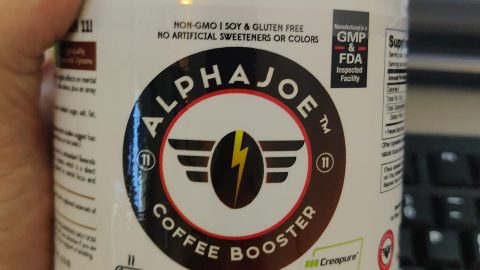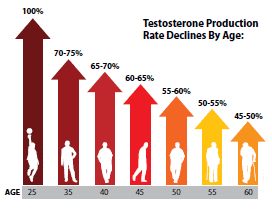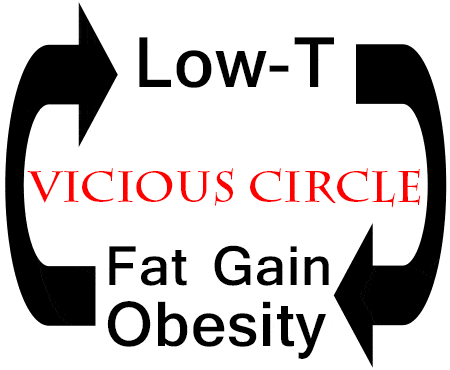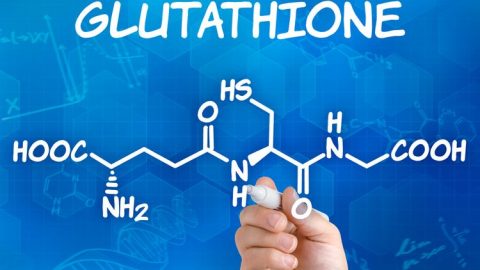Due to lack of consistent clear-cut guidelines for diagnosis and treatment of testosterone deficiency, there is a lot of confusion among both health professionals and suffering men. The multiple different testosterone preparations available further add to the complexity of testosterone treatment.
This editorial presents the intriguing results from a notable study that analyzed effects of testosterone therapy with seven different testosterone preparations, in symptomatic men who had previously been denied treatment because of “normal” baseline testosterone levels.[1] The results are quite provocative and highlight several important practical issues relating to diagnosis and treatment of testosterone deficiency…
KEY POINTS
– Symptoms indicative of testosterone deficiency do not correlate with either total or free testosterone levels a baseline. Symptomatic patients with testosterone levels in the “normal range” benefit as much as do those with very low testosterone levels.
– Symptomatic relief may require longer than 1 year to achieve – this underscores the critical importance of long-term adherence to testosterone therapy. This contrasts with the common clinical practice of only giving testosterone therapy to men for 3-6 months to “see if it works”.
– Treatment with testosterone undecanoate injections may confer better symptomatic resolution than other preparations during the first year of treatment.
– None of the commonly available testosterone preparations cause any adverse effects on prostate or cardiovascular related parameters.
– While all commonly available testosterone preparations are safe and effective, risk of excessive increases in hemoglobin or hematocrit and polycythemia may be greater with pellet implants or transdermal testosterone.

What is known
Diagnosis and treatment of testosterone deficiency is a complex issue, for many reasons. Symptoms that may be indicative of testosterone deficiency are not specific to this condition, and may be related to co-morbidities.[2, 3] Despite proposed testosterone thresholds by clinical guidelines (which are not universally agreed upon) there is no single testosterone level – which applies to all men – at which symptoms and signs indicative of testosterone deficiency start to develop.[4, 5] Further complicating the issue of diagnostic testosterone thresholds is the tremendous variability in testosterone assays – each giving different readings – and assay specific reference ranges that vary between labs.[6, 7] In addition, because of differences in androgen receptor sensitivity, among men with the same testosterone level, some may suffer hypogonadal symptoms, while others don’t.[8]
Adding to this complexity are the multiple available testosterone treatment options.[9, 10] Available testosterone preparations include transdermal, intramuscular injections, oral, sublingual/buccal and pellet implants. Each has its own pros and cons that need to be considered when treating hypogonadal men.
What this study adds
The study by Carruthers et al. reports clinical experience with seven different testosterone preparations available in the UK.[11] The goal was to investigate symptom response to testosterone treatment with testosterone undecanoate injections, pellet implants, scrotally applied gel, scrotally applied cream, transdermal testosterone gel, oral testosterone undecanoate or mesterolone. In addition, effects on endocrine, biochemical and physiological responses to the different preparations were investigated.
The study
2247 men, mean age 54 years (range 20-90 years) attending the 3 Men’s Health Centers were treated with one of seven different testosterone preparations.
A notable aspect of this study is that diagnosis was made on the basis of clinical signs and symptoms alone – regardless of baseline testosterone levels – and it included many patients who had previously been declined treatment by their doctors because they were deemed to have testosterone levels in the ‘‘normal’’ range. Overall, only 31% of men had pre-treatment total testosterone levels below 346 ng/dL (12 nmol/L), a commonly used threshold required for the diagnosis of hypogonadism, as proposed by several clinical guidelines.[3, 12, 13]
Correlation of baseline testosterone levels with symptom severity and symptom resolution
Surprisingly to many, it was found that baseline total testosterone and free testosterone (calculated) levels were totally unrelated to the initial symptom score (which was the reason for patients attending the clinic for treatment). Also, there was no association between initial symptom score and baseline estradiol or SHBG. This is consistent with results from other studies showing failure of hormone parameters to correlate with testosterone deficiency symptoms.[14, 15] This clearly shows that sole reliance on testosterone levels is inappropriate when evaluating men for testosterone deficiency.
Comparing the symptomatic responses to treatment in the patients with initial total testosterone levels below 346 ng/dL (mean 277 ng/dL) with those greater than or equal to 346 ng/dL (mean 551 ng/dL), there was no significant difference between either the initial symptom scores or their response to treatment for up to 12 years, regardless of testosterone preparation used for treatment. This can be explained by inter-individual differences in androgen receptor sensitivity, which makes some men resistant to the effects of testosterone.[8] Those men can have markedly higher testosterone levels but still experience the same degree of symptoms as do men with much lower levels.
Symptom resolution as a function of testosterone preparation and treatment duration
Comparing the different testosterone preparations, the rates for failure to achieve complete symptom response at 1 year with testosterone undecanoate injections, pellet implants, scrotally applied gel, testosterone gel, scrotal cream, oral testosterone undecanoate and mesterolone were 18, 23, 21, 35, 35, 49 and 59%. Thus, within the first year of treatment, testosterone undecanoate injections performed very well in terms of symptom resolution.
However, among patients who did not achieve resolution of symptoms during the first year of testosterone treatment, those who stayed on treatment eventually did achieve significant symptomatic benefit compared to baseline. Thus, even subjective symptoms (not only biochemical parameters and cardiometabolic risk factors) may take longer than 1 year to resolve. This is an important finding, as symptomatic relief is often noticeable within 3 to 6 months after start of testosterone therapy [16] and many physicians discontinue testosterone treatment in patient who do not experience symptomatic improvement within this time period. It also suggests that the previously suggested duration for a testosterone treatment trial of 3 months in symptomatic men [17] may not be enough to allow for symptomatic relief.
Safety of the different testosterone preparations
The safety factors monitored using these preparations, including renal and liver function tests, remained normal. Also, there was no clinical evidence of either increased cardiovascular events or venous thrombosis. Cardiovascular risk factors either did not change or improved (reduction in cholesterol and diastolic blood pressure).
In few cases, treatment with pellet implants or testosterone gel caused excessive increases in hemoglobin or hematocrit and polycythemia. However, this was reversed by phlebotomy, dose reduction or switching to another preparation. Regardless of testosterone preparation, there were no excessive increases in PSA nor any adverse prostate changes, and the incidence of prostate cancer was equivalent to that in the general population, as had been reported previously.[18]
Key findings and Conclusion
This study highlights two important issues relating to diagnosis and treatment of testosterone deficiency:
1. Symptoms indicative of testosterone deficiency do not correlate with either total or free testosterone levels a baseline. This contradicts clinical practice guidelines which require a combination of symptoms and “unequivocally low testosterone levels” to make the diagnosis of testosterone deficiency [3, 12, 13], but supports the view of other academicians that initiation of testosterone treatment should rely more on symptoms and less on a discrete numerical testosterone level thresholds.[19]
2. Symptomatic relief may require longer than 1 year to achieve. This may contribute to the low compliance seen with even the use of the very popular transdermal testosterone gels: only 31% and 14% of patients remained on therapy for 6 months and 1 year, respectively.[20] Therefore, the importance of testosterone treatment adherence and patient education should be underscored in clinical practice.
In particular, this study gives further evidence against denying men with obvious symptoms testosterone therapy testosterone therapy because they have “normal” testosterone levels.[11] Due to excessive reliance on laboratory measures of testosterone levels and inappropriate safety concerns, many men who could greatly benefit from symptom relief and improvement in risk factors remain untreated and deprived of clinically significant preventive medical benefits. This not only causes unnecessary personal suffering, but also imposes a marked financial cost upon an already burdened health care system.[21, 22]
———————————————————————————————————————————————–
About Monica Mollica > www.Ageless.Fitness

Monica Mollica holds a Master degree in Nutrition from the University of Stockholm / Karolinska Institue, Sweden. She has also done PhD level course work at renowned Baylor University, TX.
Having lost her father in a lifestyle-induced heart attack at an age of 48, she is a strong advocate of primary prevention and early intervention, and the development of lifestyle habits for health promotion at all ages.
Today, Monica is sharing her solid medical research insights and real-life hands on experience and passion for health and fitness by offering nutrition / supplementation / exercise / health consultation services, and working as a medical writer specializing in health promotion, fitness and anti-aging.
She is currently in the process of writing a book on testosterone, covering health related issues for both men and women.
———————————————————————————————————————————————–
References:
1. Carruthers, M., P. Cathcart, and M.R. Feneley, Evolution of testosterone treatment over 25 years: symptom responses, endocrine profiles and cardiovascular changes. Aging Male, 2015. Published online July 28, 2015.
2. Bernie, A.M., J.M. Scovell, and R. Ramasamy, Comparison of questionnaires used for screening and symptom identification in hypogonadal men. Aging Male, 2014. 17(4): p. 195-8.
3. Bhasin, S., et al., Testosterone therapy in men with androgen deficiency syndromes: an Endocrine Society clinical practice guideline. J Clin Endocrinol Metab, 2010. 95(6): p. 2536-59.
4. Kelleher, S., A.J. Conway, and D.J. Handelsman, Blood testosterone threshold for androgen deficiency symptoms. J Clin Endocrinol Metab, 2004. 89(8): p. 3813-7.
5. Zitzmann, M., S. Faber, and E. Nieschlag, Association of specific symptoms and metabolic risks with serum testosterone in older men. J Clin Endocrinol Metab, 2006. 91(11): p. 4335-43.
6. Carruthers, M., T.R. Trinick, and M.J. Wheeler, The validity of androgen assays. Aging Male, 2007. 10(3): p. 165-72.
7. Moreno, S.A., A. Shyam, and A. Morgentaler, Comparison of free testosterone results by analog radioimmunoassay and calculated free testosterone in an ambulatory clinical population. J Sex Med, 2010. 7(5): p. 1948-53.
8. Carruthers, M., The paradox dividing testosterone deficiency symptoms and androgen assays: a closer look at the cellular and molecular mechanisms of androgen action. J Sex Med, 2008. 5(4): p. 998-1012.
9. Behre, H.M. and E. Nieschlag, Testosterone preparations for clinical use in males, in Testosterone – Action, Deficiency, Substitution, E. Nieschlag and H.M. Behre, Editors. 2012. p. 309-335.
10. Giagulli, V.A., et al., Evidence-based medicine update on testosterone replacement therapy (TRT) in male hypogonadism: focus on new formulations. Curr Pharm Des, 2011. 17(15): p. 1500-11.
11. Carruthers, M., P. Cathcart, and M.R. Feneley, Evolution of testosterone treatment over 25 years: symptom responses, endocrine profiles and cardiovascular changes. Aging Male, 2015: p. 1-11.
12. Wang, C., et al., Investigation, treatment, and monitoring of late-onset hypogonadism in males: ISA, ISSAM, EAU, EAA, and ASA recommendations. J Androl, 2009. 30(1): p. 1-9.
13. Dohle, G.R., et al., EAU Guidelines on Male Hypogonadism. 2012, European Association of Urology
14. Morales, A., et al., Adding to the controversy: pitfalls in the diagnosis of testosterone deficiency syndromes with questionnaires and biochemistry. Aging Male, 2007. 10(2): p. 57-65.
15. Miwa, Y., T. Kaneda, and O. Yokoyama, Correlation between the Aging Males’ Symptoms Scale and sex steroids, gonadotropins, dehydroepiandrosterone sulfate, and growth hormone levels in ambulatory men. J Sex Med, 2006. 3(4): p. 723-6.
16. Saad, F., et al., Onset of effects of testosterone treatment and time span until maximum effects are achieved. Eur J Endocrinol, 2011. 165(5): p. 675-85.
17. Black, A.M., A.G. Day, and A. Morales, The reliability of clinical and biochemical assessment in symptomatic late-onset hypogonadism: can a case be made for a 3-month therapeutic trial? BJU Int, 2004. 94(7): p. 1066-70.
18. Feneley, M.R. and M. Carruthers, Is testosterone treatment good for the prostate? Study of safety during long-term treatment. J Sex Med, 2012. 9(8): p. 2138-49.
19. Maganty, A., J.E. Shoag, and R. Ramasamy, Testosterone threshold – does one size fit all? Aging Male, 2015. 18(1): p. 1-4.
20. Schoenfeld, M.J., et al., Medication adherence and treatment patterns for hypogonadal patients treated with topical testosterone therapy: a retrospective medical claims analysis. J Sex Med, 2013. 10(5): p. 1401-9.
21. Moskovic, D.J., et al., The 20-year public health impact and direct cost of testosterone deficiency in U.S. men. J Sex Med, 2013. 10(2): p. 562-9.
22. Arver, S., et al., Is testosterone replacement therapy in males with hypogonadism cost-effective? An analysis in Sweden. J Sex Med, 2014. 11(1): p. 262-72.









Mr Brink , do you know of anything besides plenty of rest and heavy squats that can raise test levels?
Losing excess body fat – by eating healthy and exercising regularly – does increase T levels in obese men.
However, there is no one single “magic bullet” exercise or food or dietary supplement for boosting T levels.
There’s a vid on this site on “natural” ways to raise T if you search, in addition to Monica’s comments here.
1. We’ve known for a long time that endocrine disorders are diagnosed clinically. A sophisticated physician examines the patient, takes a careful history and uses lab to confirm the diagnosis or catch gross deficiencies or excesses.
2. Adequate hormone levels are based on size, development and lifestyle habits. A 250 lb male with low body fat that engages in rigorous physical activity will require higher hormone levels than than the 150 lb, sedentary guy. Lifestyle factors such as stress also increase demand and metabolism of hormones.
3. Commercial testosterone preparations (excepting testosterone cypionate) are only adequate for mild deficiencies.
4. Most men with proper dosing achieve relief of symptoms with. 6 mos. Using low preparations with no consideration to physical development, activity, symptoms and lifestyle is most likely responsible for the extended period necessary to achieve amelioration of symptoms.
All of the above has been in the medical literature for years. Please see
The Hormone Handbook
Thierry Herroghe, MD
There are hundreds if not thousands of studies supporting this work in the appendix.
#1. Yes.
#2. When discussing adequate hormone levels one has to remember that aside lifestyle, there are are genetically set differences in androgen receptor sensitivity (AG CAG polymorphism). This mean that two men who are matched for body composition, weight, lifestyle and age, may still have different androgen requirements.
#3. No! There are other commercial testosterone preparations in addition to cypionate that work very well. The critical factor is dose and duration for TRT.
#4. Different symptoms require different T levels to resolve. Also, I want to point out that TRT confers many “invisible” health benefits beyond obvious symptoms, such as improvements in metabolic parameters, lipid profiles and body composition, as well as increases in bone mineral density (which take may years to achieve) and longevity. For more, see http://www.agelessforever.net/anti-aging-news-blog/multiple-benficial-effects-of-testosterone-replacement-therapy-in-men-with-testosterone-deficiency
#3
Only if you exceed the FDA approved dose, particularly true of the alcohol based transdermal preparations.
#4
Very true however; that’s not what we are talking about here. No one asks their doc for T therapy because of the “invisible” health benefits and the doc stops treatment after 3 mos. Men seek treatment because they are experiencing increased abdominal obesity, decreased muscle mass, depression, loss of libido, ED and other behavioral complaints such as lack of interest and excessive emotions.
When proper dosing is employed and trough total testosterone is maintained above 1,000 ng/ml, virtually all men experience relief (without side effects) within 6 mos and most within 3 mos.
The year to get better finding is based on sub-optimal dosing. We all know that that testosterone has been stigmatized and it will take some time for the medical community to realize that it’s not evil. This has sadly resulted in over cautions dosing protocols. Of course estradiol must be aggressively managed when maintaining total T in the range I note above.
Just to make a point, I saw a physician in urgent care a few months ago for an unrelated condition and he warned me that I am at high risk for prostate cancer because I am on HRT. Ridiculous.
#3. There is no such thing as “FDA approved dose”.
#4. While it is true that a higher T level will be more effective in symptom resolution, there is no specific universal threshold (because of inter-individual differences in androgen sensitivity). Thus your statement that the T level need to be above 1,000 ng/ml is erroneous. Some men may get excellent responses at lower levels, while others may require even higher levels.
Yes, it is going to take time before the new T research makes it to clinical practice. In the past, it has sometimes taken as long as almost 2 decades for new research to make it to the med school curriculum! As a medical writer I am working hard to educate doctors with the aim to shorten this time lag… In the meantime, I am urging all men to learn as much as they can from trust-worthy sources and take charge of their own health!
Ok Monixa. This is amusing. An engineer (me) debating the practice of medicine with a nutritionist (you).
Neither one of us is qualified to answer these questions, yet we both are making strong statements that would seem to indicte otherwise.
#3
To continue with the theme:
The FDA approves medicines as well as a dosing range for that medicine. For example the starting dose of Amdrogel is around 81 mg per day (depending on strength). A physician can certainly go higher or lower than the dose approved for an indication if they so choose.
#4
I never said the dose had to be above 1000. I did say that virtually all men experience relief with levels above 1000. This doesn’t mean everyone must or should be.
Note what I mentioned about developememt, lifestyle and activity etc. A 250 lineman requires more T than a 150 sedentary librarian.
Of course sensitivity plays into this. GH, cortico and adrenal steroids, thyroid, IGF-1, melatonin etc, etc also influence dosin and efficacy.
Recently I’ve heard different opinions from physicians on the advisability of testosterone treatment for men who have had prostate cancer. One doctor said it is not contraindicated, and pointed me to a paper by Dr Abraham Morgentaler (the same author as in Ref. 7 above), which I found very convincing. However, another physician, in whom I have great confidence, told me Dr. Morgentaler was a “TV doctor” and “doesn’t do research”; an endocrinologist also said T replacement should not be used if there is a history of prostate cancer.
I actually joined Research Gate to see if anyone had published anything refuting Morgentaler, and there didn’t seem to be any. (It also had the unexpected bonus of showing me that people were still quoting papers I had written in the 70s!)
I did find that Dr Khera was cited on the blog on agelessforever.net as believing there is absolutely a benefit to giving a man testosterone after radical prostatectomy. Dr Khera has co-authored with Dr Morgentaler.
Monica and Will, have you any comments?
Ken, run away as fast as you can from people who say that Dr Morgentaler does not conduct research!! That doctor is evidently is not staying on top of medical research. Dr Morgentaler’s research has created a paradigm shift in the field pf Urology and prostate cancer. Dr Khera is on Dr Morgentaler’s research team. I’m gathering you read my article on the topic:
http://www.agelessforever.net/anti-aging-news-blog/provocative-new-research-on-testosterone-prostate-cancer-and-bph-luts
Wonderful job as usual Monica. Will your book cover a natural way to boost testosterone? I know exercise is a good way to do so. But when one is getting older exercise alone would not help. I may be wrong on that.
Keep up the good work,
Larry
Thank you. 🙂
Yes, I will go into boosting T by non-TRT ways… however, like I have said before, there are no magic bullets. The major determinant of T levels is body fat; thus, reduce your body fat (by a healthy diet and exercise) and your T levels may increase… Nevertheless, this typically requires a large fat loss that most men cannot achieve (and maintain!) by diet + exercise alone.
I have covered the bi-directional relationship between T levels and body fat in a previous article, that you may find relevant:
http://www.agelessforever.net/anti-aging-news-blog/testosterone-and-fat-loss-the-evidence